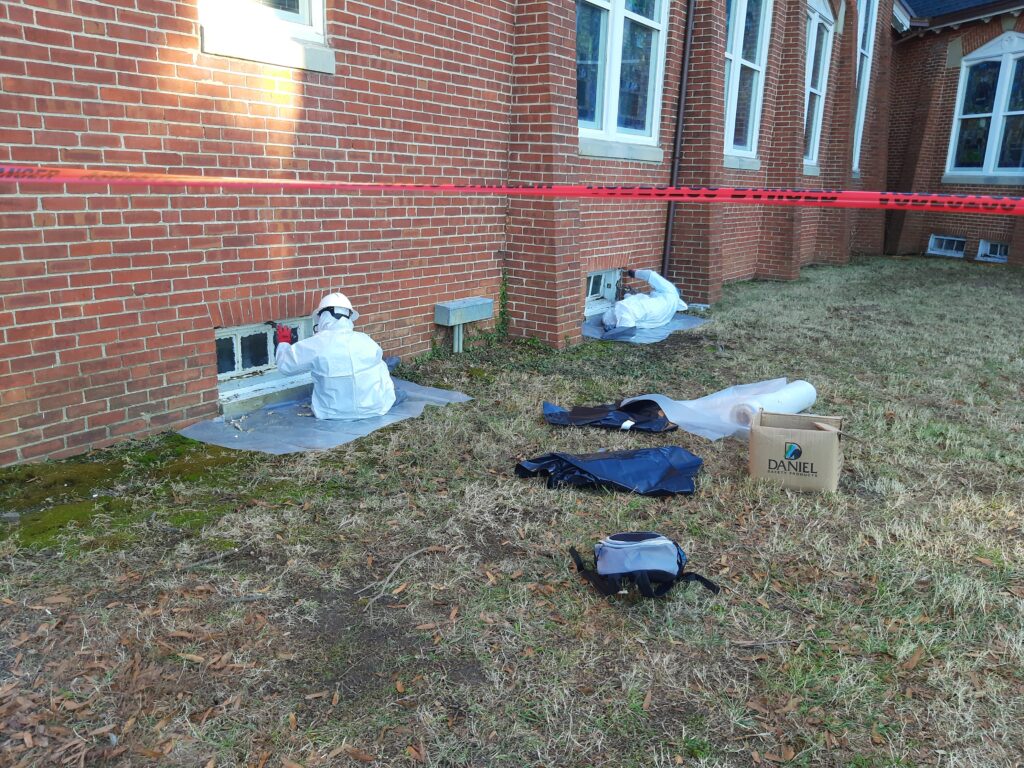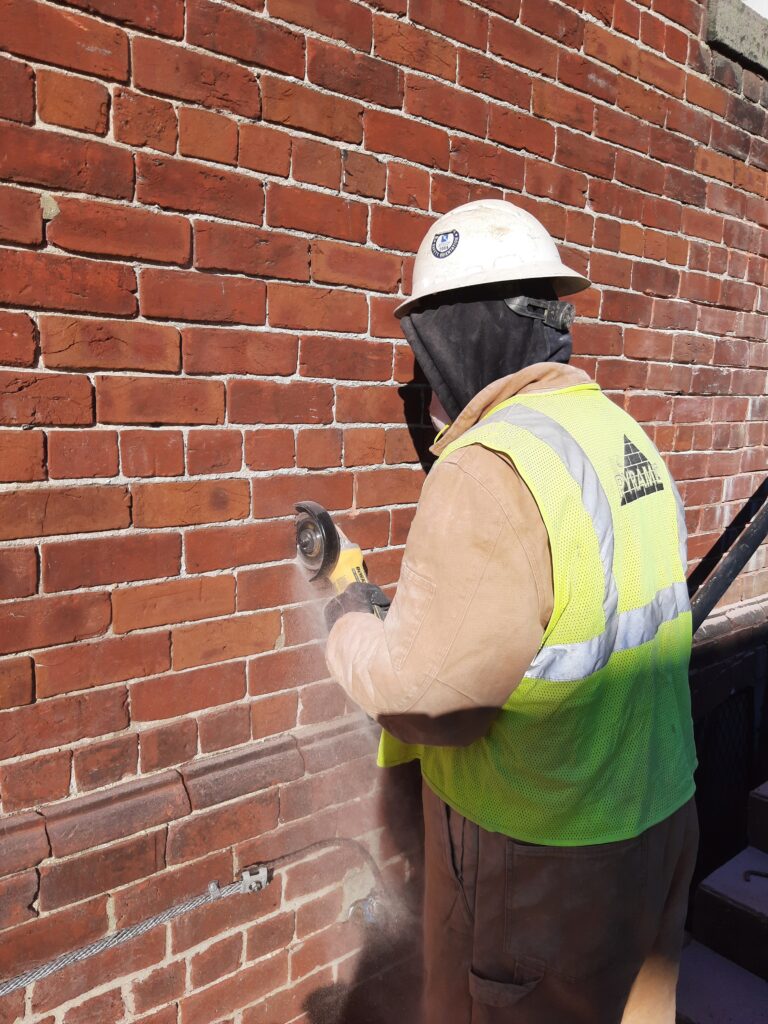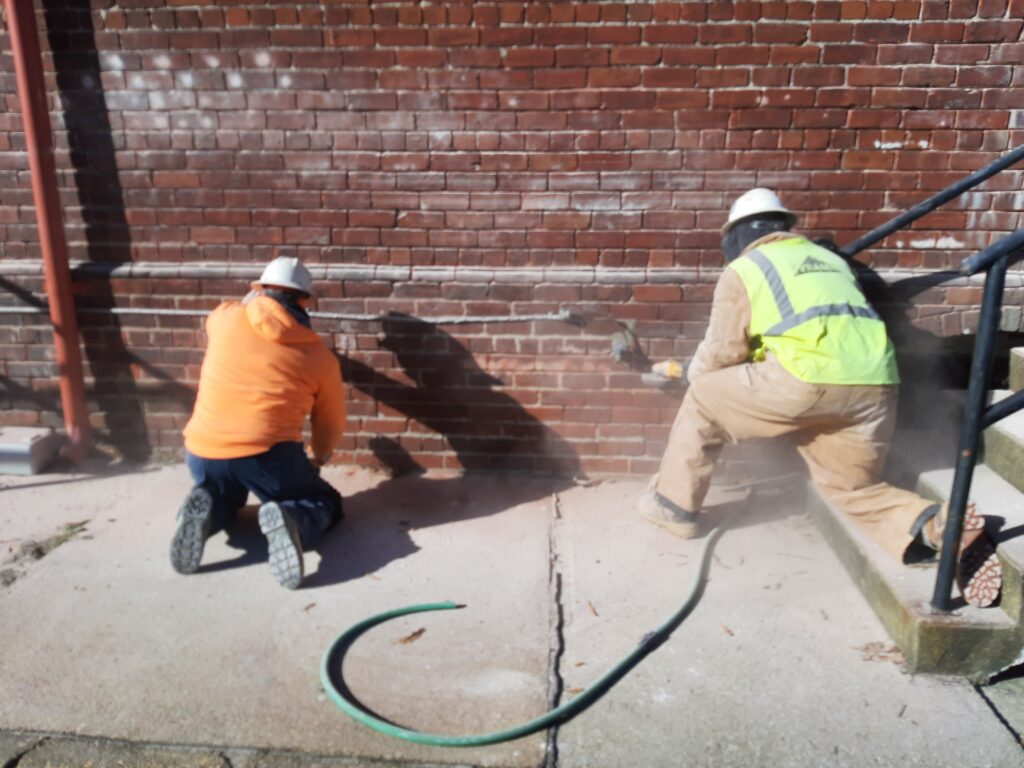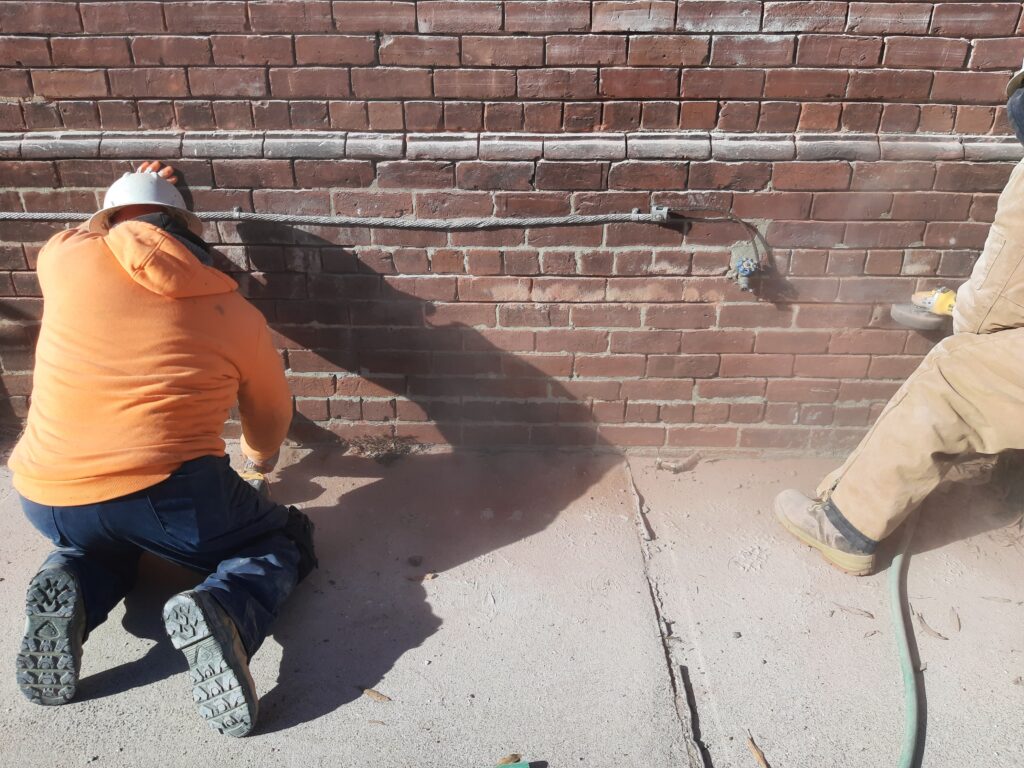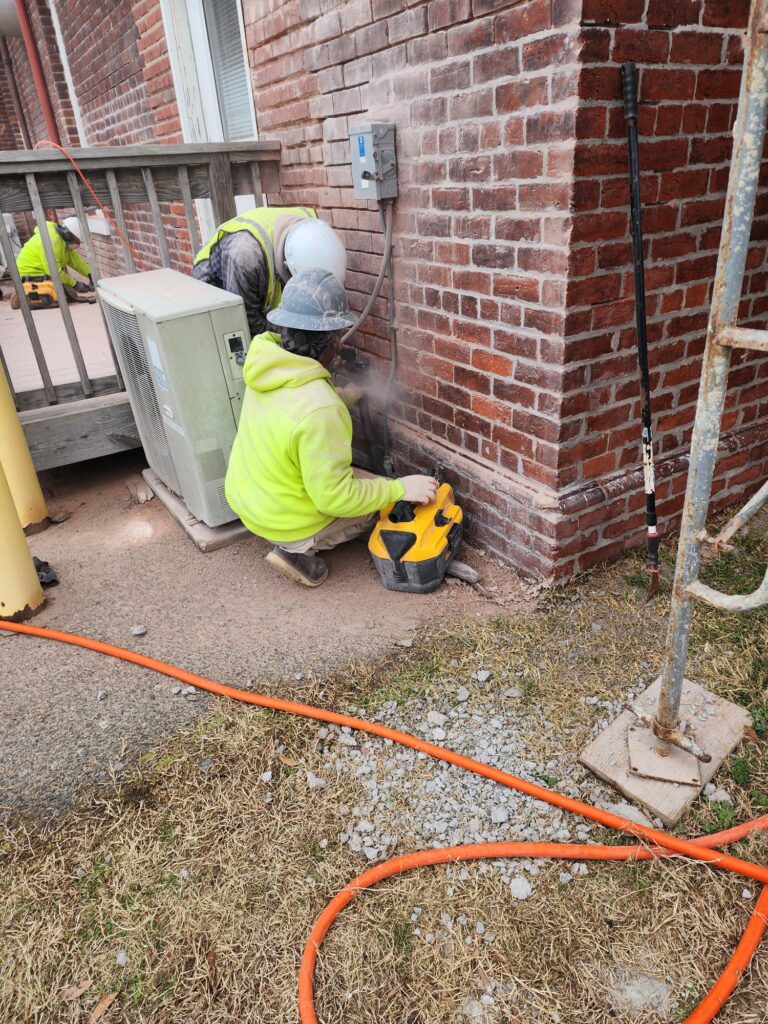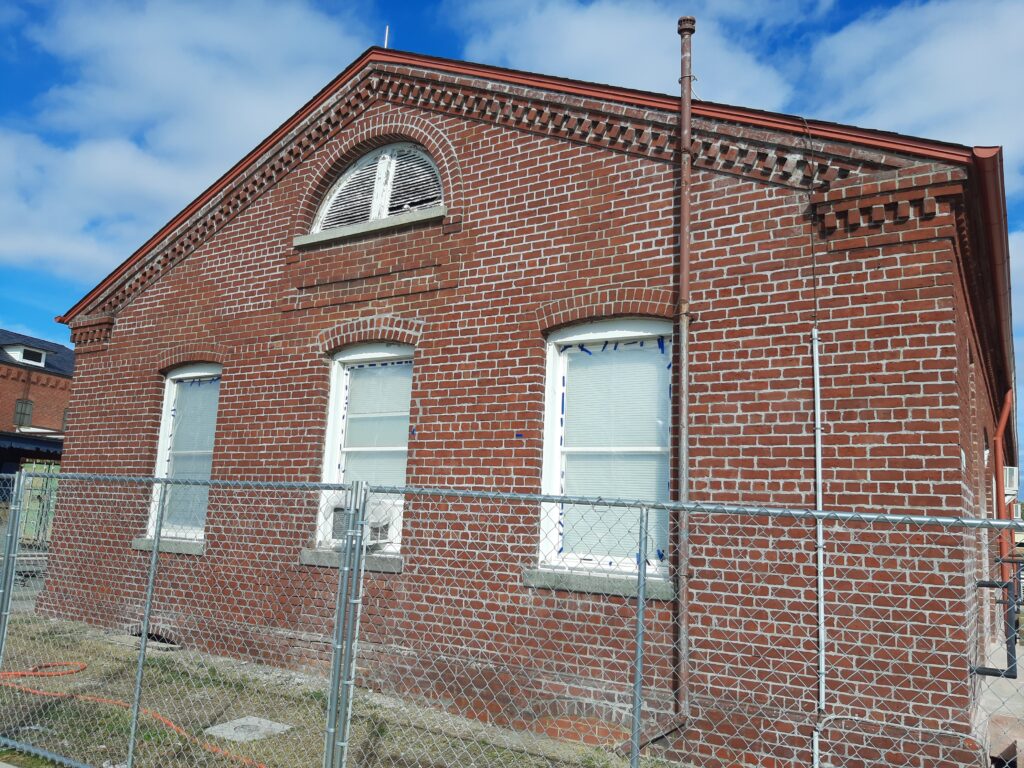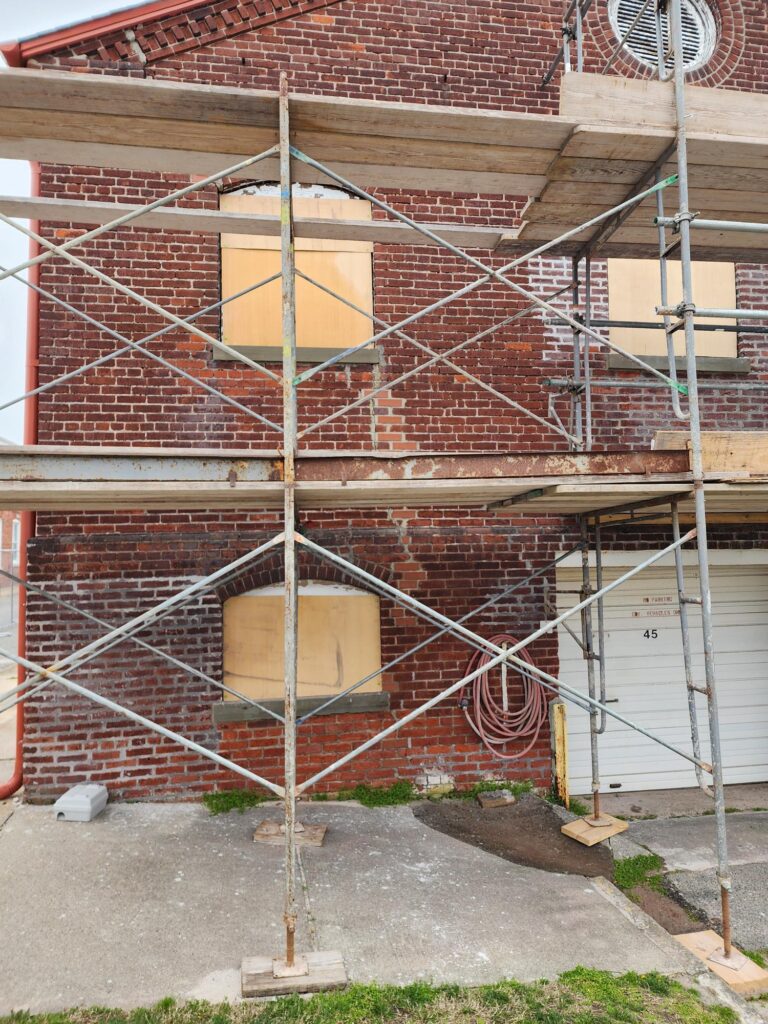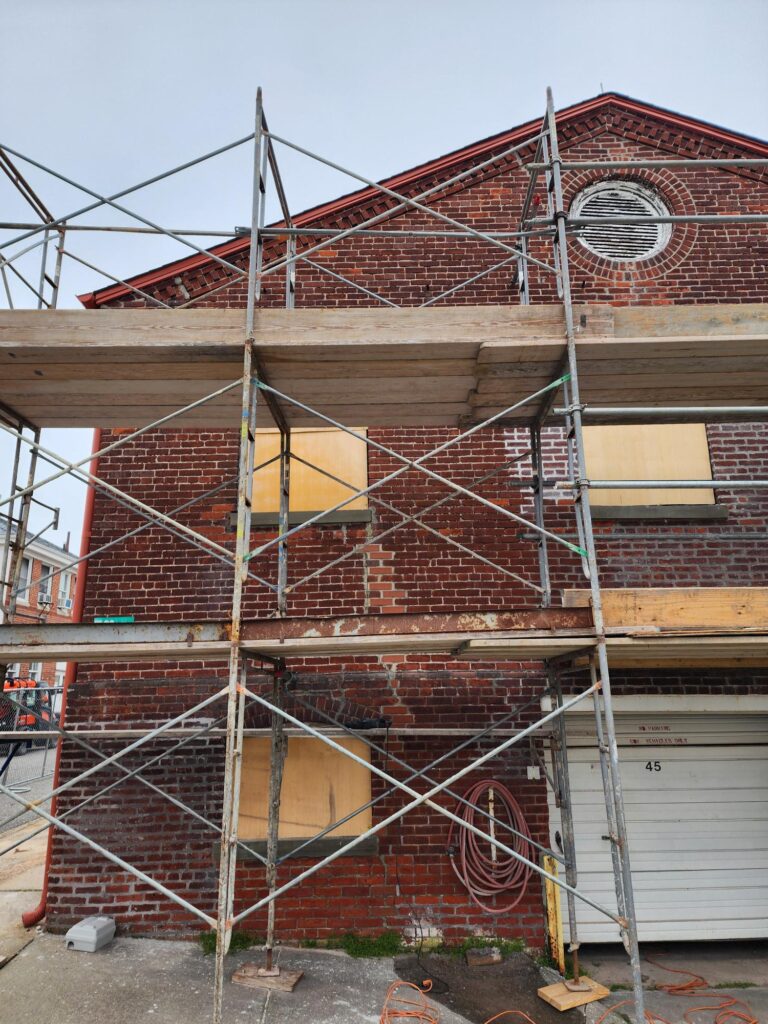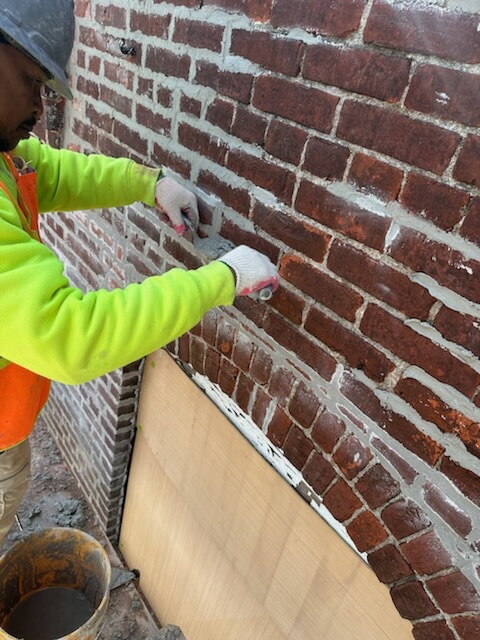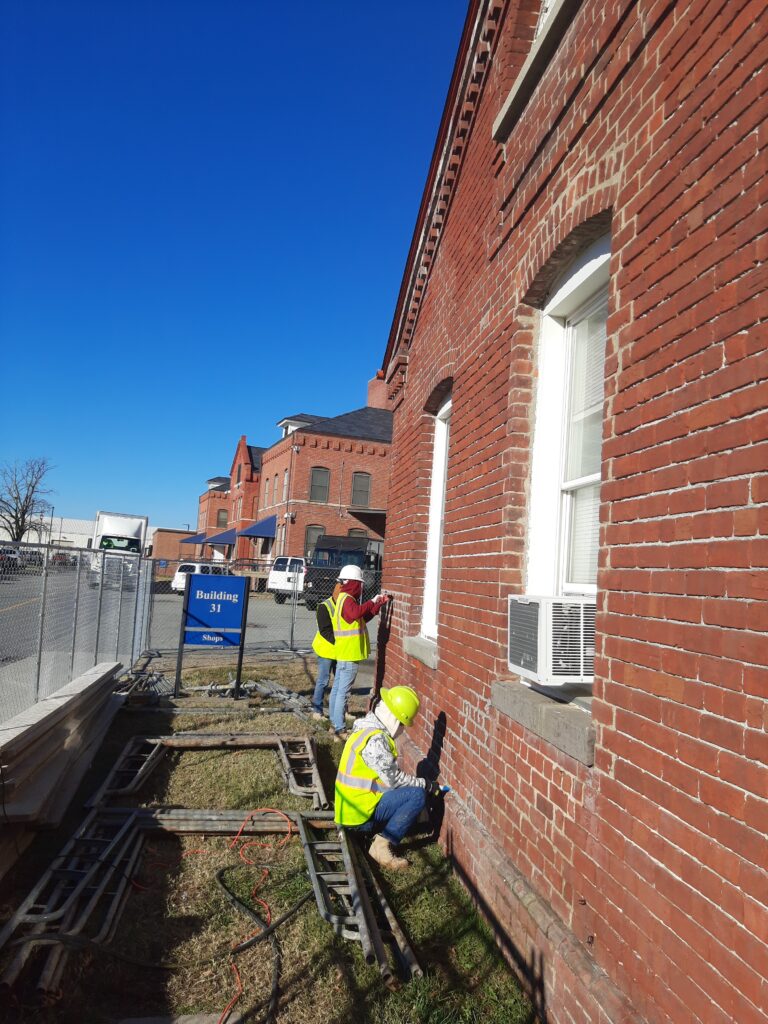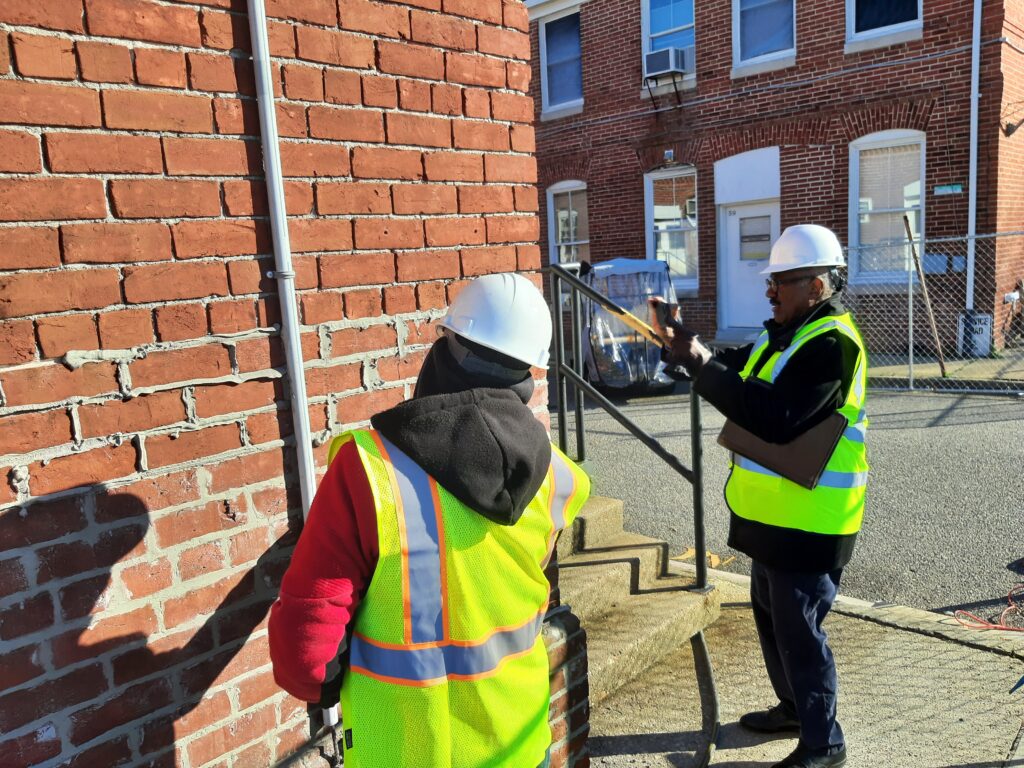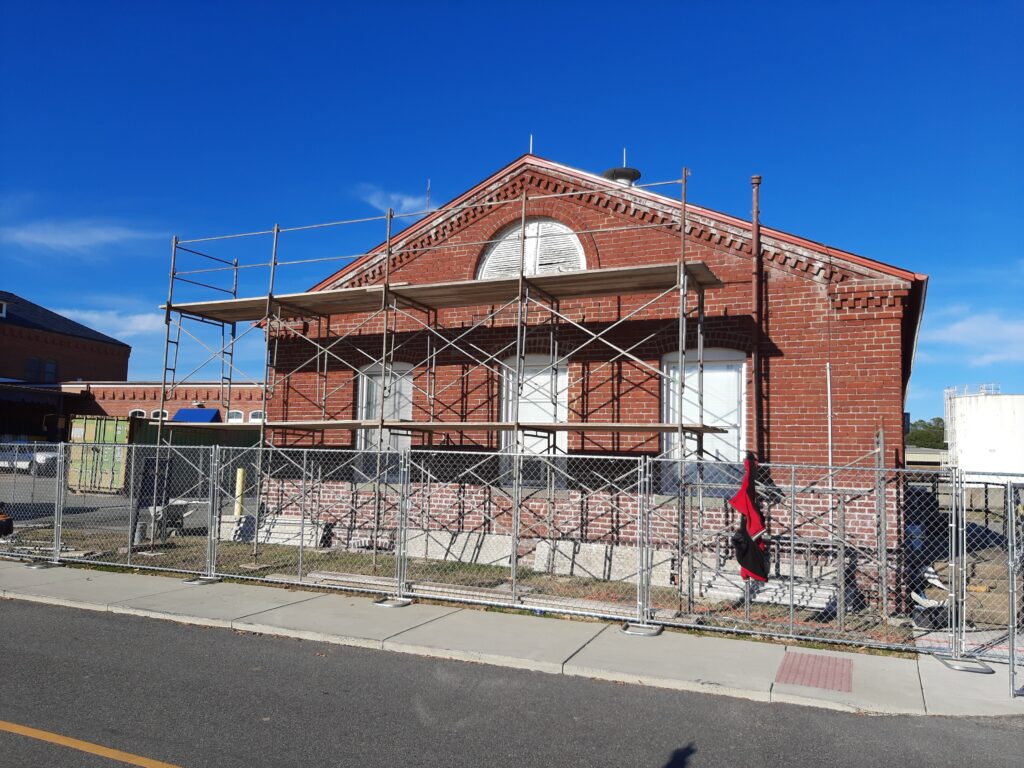The Hampton VA Medical Center, a living testament to the nation’s commitment to veterans, stands as one of the oldest VA hospitals in the United States, opening its doors in 1870. This 432-bed teaching facility in Hampton, Virginia, proudly provides comprehensive healthcare to over 69,000 veterans annually, including primary care, acute inpatient medicine, acute psychiatric care, chronic spinal cord injury treatment, and long-term care through its Community Living Center and hospice unit. The historic campus, with buildings constructed from hand-made bricks, faced challenges due to the harsh coastal environment, which caused significant deterioration of the original mortar and subjected the walls to moisture damage.
This tuck point project at the Hampton VA Medical Center focused on meticulously restoring the masonry exteriors of Buildings 28, 31, 43, 48, and 114. The scope of work included cleaning and tuck-pointing all masonry, sealing cracks around exterior door frames and windows, replacing damaged bricks, removing non-matching mortar, and repointing bricks. Additionally, the project involved repairing and refinishing damaged windowsills, caulking, removing concrete parging on brick, and sanding and resurfacing limestone architectural elements. Each building presented unique challenges due to its construction in different historical periods, using varying brick-and-mortar techniques. To ensure the highest restoration standards, B2 Constructors engaged local consultants for specialized training, methodology references, and regular inspections.
Executing this project within an operating hospital presented unique challenges. However, every precaution was taken to ensure the safety of patients, staff, and workers. The project was divided into three phases: Phase A covered Buildings 28 and 31, Phase B included Building 114, and Phase C encompassed Buildings 43 and 48. Construction activities were meticulously scheduled to avoid disturbances to VA employees and patients, and equipment generating vibrations and noise was used cautiously. Protective measures such as temporary partitions and alternate access routes were implemented to safeguard hospital occupants and maintain continuous access to essential services. The careful phasing and rigorous safety protocols ensured the restoration progressed efficiently while preserving the hospital’s critical functions.
